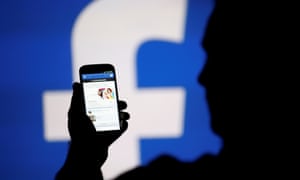1) What are the five types of feminism outlined on the first page of the Factsheet?
- Radical feminism - This type of feminism sees the cause of women’s oppression as men. It assumes that men deliberately exploit women as
this benefits them. One of the main aims of this theory is to address concerns over violence against women, especially in
sexual relationships.
- Liberal feminism - This type of feminism is mainly concerned with gender socialisation in order to show that gender roles are not biologically
determined. The main aim of this type of feminism is to change the ways children are socialised into stereotypical gender
roles and to attempt to change social policy to improve the position of women within the family.
- Marxist - feminism - is an approach that looks at women’s oppression in relation to capitalism and the class system. One of the aims of
this type of feminism is to look at the role of domestic labour within capitalism, namely that women work in the home for
‘free’, and the role women play in producing the next generation of the labour force.
- Black feminism - is primarily concerned with black and Asian women’s experiences of oppression and exploitation. It
combines ideas about capitalism, patriarchy and anti-racism.
- Postmodern feminism- is associated with third wave feminists. It acknowledges the diversity amongst women and
encourages individual women to find feminist ideas that combine with their own experiences of life to create a brand of
feminism suitable for them
2) Which category would Judith Butler fit into? What about Angela McRobbie? Laura Bates and Everyday Sexism? Explain your answers.
Judith Butler would fit into the category of - liberal feminism as she believes that gender roles are ‘a performance’ and that male and female behaviour is socially constructed rather than the result of biology.
Angela McRobbie would side with the category of - post modern feminism, due to believing that
Laura Bates would fit in with post modern feminism, as she made a project for women to talk about their sexual assaults, etc.
3) What was the difference between suffragists and suffragettes? Which approach do you agree with?
Both were
women’s groups interested in extending women’s rights in the late 19th and early 20th centuries but they had very different ways of
expressing and achieving their aims.
Suffragists - Liberal feminists
The Suffragists wanted to expand rights for all
women and tried to achieve their
goals through moderate, peaceful
and lawful means. They presented
reasoned arguments at public
meetings and used petitions to raise
public awareness.
Suffragettes - Radical feminists
They believed
strongly in what they were
fighting for and were not
afraid to use violent,
confrontational and often
illegal means to achieve their
aims. They wanted the same
rights as men and their chosen way to reach this goal was
through ‘deeds not words’, most famously chaining
themselves to the railings outside Downing Street and the
houses of Parliament.
I agree more with the Suffragists, as I believe they took more of a rational approach. However, also agree with the Suffragettes as they felt the need to take a violent approach due to nothing being resolved or changed about women's rights.
4) What was Laura Mulvey's argument regarding Hollywood film? Do you agree with it? Why?
Laura Mulvey argued that the cinematography of classic Hollywood films
objectifies women; the camera ‘looks’ at women as if were a male
and the woman is a desirable sexual object. She called this the male
gaze and suggested that women are either viewed in a ‘voyeuristic’
way, which makes them ‘whores’, or in a ‘fetishistic’ way, making
them ‘madonnas’ or virgins.
Mulvey thought the only way to alter
the representations of women in film was to completely change the
cinematography of films by creating a new avant-garde style of
feminist film-making.
I do agree with Mulvey's argument of the Hollywood industry mainly objectifying women as sexual objects, as most of the time we either see them in revealing clothes or due to what the men say to the women.
5) Watch this YouTube video extract on Jean Kilbourne's Killing Us Softly series and list five examples she gives of the media objectifying women:
- Weight loss
- You have to be pretty, otherwise nothing else matters - "If your hair isn't beautiful the rest hardly matters".
- Women are only needed for their beauty - "My boyfriend said he loved me for my mind, I was never so insulted in my life"
- Objectified as a "product" - "she's built like all our products: heavy where she has to take the strain"
- "Made for women's extra feelings"
6) What is Killbourne's argument regarding the representation of women in advertising?
Killbourne argues that women are only used in advertising for the appearance/bodies. She also argues, that the media give a false idea and look on the way appear, as even models state that's not how they actually look; "I wish I looked like Cindy Crawford." Therefore, she argues the media gives a false representation of what women actually look like.
7) What is Naomi Wolf's argument in The Beauty Myth?
Naomi argues that the whole idea of what beauty is, is socially constructed and patriarchal. She also states that men are the ones who give the idea's and thoughts of what women are supposed to look like.
8) Why is the representation of women in music videos a controversial topic for feminists?
It's a controversial topic for feminists as some argue that women especially in music videos are objectified, instead of being portrayed as an empowering role model. One theorist Sut Jhally, states that people are in fact influenced by watching certain things such as women in music videos.
9) What is your view of female artists such as Nicki Minaj or Beyonce - do they empower women or reinforce sexist, patriarchal views?
I think female artists such as Nicki Minaj and Beyonce do empower women but at the same time they also reinforce the sexist patriarchal views, as through most of their videos they portray themselves as independent strong women, however, they do this in a very provocative manner.
10) Has new and digital media given women an opportunity to challenge sexist views or is it simply another media platform for women to be oppressed? Explain your view.
New and digital media has given women an opportunity to challenge sexist views, as more women are able to come together and challenge these views. However, at the same time I do believe new and digital media gives people the chance to still reinforce these sexist views.




